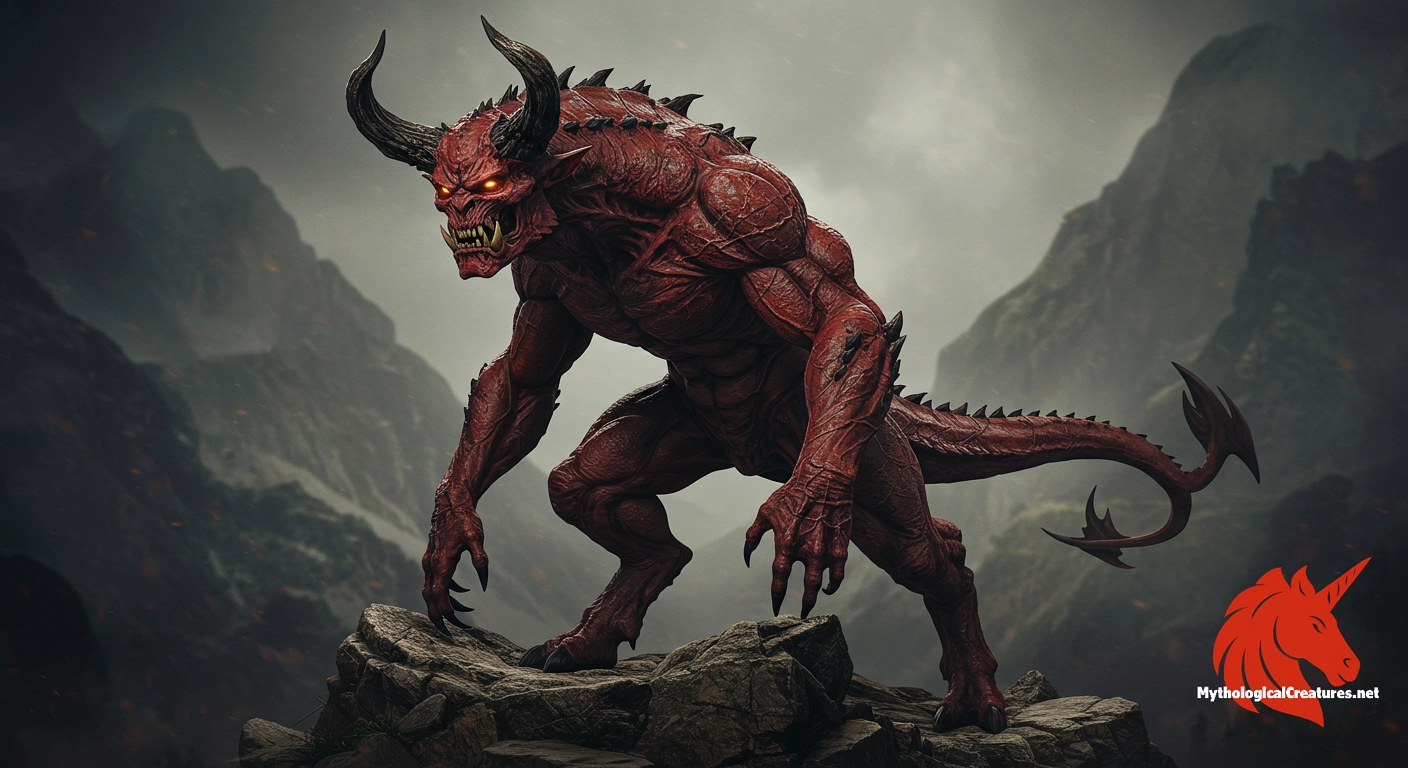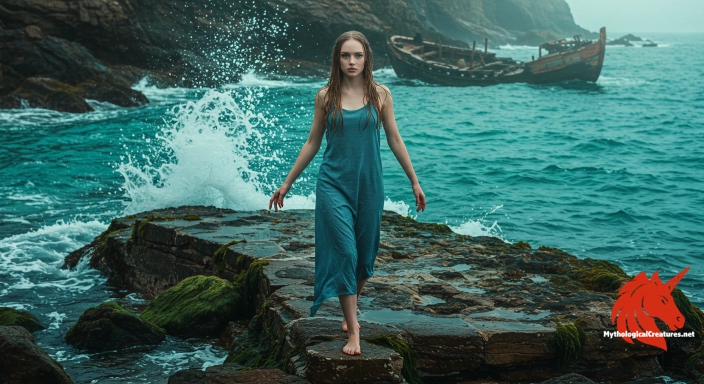Mazoku: Mazoku are malevolent supernatural entities from Japanese mythology, embodying the dark side of the spiritual realm.

Mazoku
Mazoku - Mazoku represent dark forces in Japanese myth, embodying chaos and malevolence against divine order.
Origins & First Encounters
Mazoku are formidable supernatural beings deeply embedded in Japanese mythology and fantasy, embodying the essence of darkness and chaos. Born from ancient narratives, these entities emerged as personifications of the unknown and the disruptive, occupying a space where the boundaries between the mortal and divine blur. Their early attestation can be traced to oral traditions and regional folktales that later found expression in written literature and stage performances. Over time, mazoku have evolved from mere embodiments of malevolence into multi-faceted figures that symbolise both inherent evil and the unpredictable forces of nature. They have historically represented the tension between order and chaos, reflecting societal fears and the mysteries of the natural world. Japanese cultural contexts have portrayed them as adversaries of both gods and heroes, adding an extra layer of gravitas to epic sagas. As narratives shifted with the changing social and political landscapes, mazoku also came to be seen as cautionary figures, warning of the consequences of unchecked ambition and moral decay. Their enduring presence in myth and modern storytelling underscores the complexity of the human condition and our fascination with the darker aspects of existence.
Source Texts & Tale Variants
The literary and folkloric roots of mazoku are scattered across a diverse array of ancient texts and oral traditions. Early sources hint at their existence in ephemeral records and temple manuscripts, where they were mentioned in connection with cosmic battles and the underlying forces of nature. Although detailed accounts are scarce, fragments from medieval monogatari and theatrical scripts have preserved the haunting image of these demonic beings through the ages. Variants of the mazoku narrative appear in regional legends, each adding subtle nuances to their characterisation by intertwining local superstitions and spiritual beliefs. The Edo period saw a resurgence in dramatic interpretations, with kabuki and noh plays reimagining these creatures as both formidable foes and tragic figures. Folklorists have noted that even the smallest rural communities held onto unique versions of mazoku lore, often attributing to them roles that transcended simple evil. As modern fantasy grew, traditional texts were reinterpreted through contemporary lenses, enabling new narrative variants to blossom in manga, anime, and video games. This continuous engagement with old sources ensures that the legacy of mazoku remains as dynamic as it is enduring.
Form & Powers
Traditional depictions of mazoku present them as imposing figures shrouded in an aura of otherworldly menace and mystery. Their forms are often characterised by exaggerated, inhuman features such as elongated limbs, curved horns, and eyes that gleam with an eerie, supernatural light. The skin of a mazoku is typically described as having a rugged or scaled texture, echoing motifs drawn from both reptilian and demonic imagery. In artistic portrayals, intricate details such as elaborate armour or tattered robes adorn their bodies, echoing ancient symbols and mystical runes. There is a notable variation in size and build, with some legends describing them as towering giants while others imagine a more compact, yet ferocious, silhouette. Their facial features are rendered in ways that suggest both raw power and an unsettling degree of malice, with deep-set eyes and grim expressions that haunt the viewer. Many illustrations also emphasise an aura of dark energy that appears to distort the surrounding space, adding to their intimidating presence. As modern artists reinterpret these ancient beings, the blend of traditional iconography with contemporary aesthetics continues to evolve, making the mazoku a defining figure in the visual lexicon of fantasy art.
Regional Faces
The image and narrative of mazoku vary considerably throughout different regions of Japan, reflecting a rich tapestry of local traditions and cultural interpretations. In some parts of the country, these creatures are intertwined with Shinto beliefs and are considered the shadowy counterparts to more benevolent kami, representing the disruptive forces that keep the natural order in balance. Rural folk often recount tales where mazoku emerge from dense forests or rugged mountain terrain, their presence a reminder of nature’s untamed wildness. In urban settings, modern reinterpretations sometimes cast them as symbols of industrial decay and the unforeseen consequences of rapid modernisation. The Ryukyuan islands, with their own unique spiritual heritage, offer a variant that blends indigenous superstitions with the classical image of the mazoku. Traditional theatre, including noh and kabuki, has also contributed regional flavour to their characterisation, with local adaptations infusing the tales with distinctive dialects, rituals, and iconography. These regional stories have allowed the mazoku to evolve into versatile figures, capable of embodying both chaos and order depending on the local cultural landscape. The regional diversity in their depiction not only reinforces their mythic complexity but also highlights the adaptive nature of folklore in the face of changing societal needs and environments.
Cultural Parallels
The mythology of mazoku resonates with similar figures found in other cultures, creating a fascinating network of cross-cultural parallels. Much like the demonic entities of European lore, these beings serve as manifestations of the darker aspects of the human psyche and the unpredictable forces of nature. In Japanese tradition, the mazoku share several characteristics with the well-known oni, yet they often carry an added complexity in both lore and visual representation. Comparisons can also be drawn with Middle Eastern jinn, where supernatural beings blur the boundaries between benevolence and malevolence. Another interesting parallel exists with certain aspects of the Celtic fae, whose capricious nature can oscillate between enchantment and terror. These comparative mythologies often reflect a universal human concern with the dualities of existence—order versus chaos, humanity versus the divine, and light versus darkness. The recurring appearance of such figures across disparate cultures underscores a collective need to articulate the presence of uncontrollable, intangible forces. In this light, the mazoku continue to stand as a potent symbol of the inherent ambiguity of evil and the mysterious power beyond human understanding.
Legacy & Modern Evolution
The evolution of the mazoku reflects a profound transformation from ancient mythological constructs into icons of modern fantasy culture. Initially conceived as embodiments of primordial chaos and unadulterated malevolence, these entities have gradually taken on multifaceted roles that mirror the complexities of contemporary life. As Japan transitioned through eras of social and political change, the depiction of mazoku expanded beyond simple villainy to embrace themes of tragic destiny and existential conflict. Modern reinterpretations in media such as anime, manga, and video games have reassessed their mythic status, often portraying them as conflicted antiheroes rather than one-dimensional evils. This shift is evident in the nuanced character studies and elaborate backstories that now inform their role in storytelling. Their influence can be seen not only in popular culture but also in modern artistic representations that blend traditional motifs with innovative design. The legacy of mazoku demonstrates how enduring mythological figures can adapt to contemporary interests while staying rooted in ancient symbolism. Today, they serve as a bridge between Japan's rich cultural past and its vibrant, ever-evolving creative future, continuing to captivate audiences with their complex narrative and visual allure.
Interesting Fact
An interesting aspect of mazoku is that while they are predominantly portrayed as evil, some modern reinterpretations have explored their complex origins and the ambiguities of their moral alignments.
Quick Creature Info
Associations:
Our Mythic Legendary Rating:

Also Sometimes Known As:
Habitat:
Supernatural Powers:
Physical Attributes:
Abilities:
Behavior:
Weaknesses:
Lore:
Related Creatures, Tales or Lore
- OOni
- AAkuma
- MMamono
References
Discover Another Mythical Legend You May Not Have Heard Of?
Uncover the mysteries of ancient folklore and expand your knowledge of legendary beings from cultures around the world.
Dare to Meet the Prymno....
Mythical Disclaimer: The images and data on this site are derived from various historical and literary sources, but we have found that many myths often have multiple versions and interpretations across references, sometimes contradictory. As a result, these creature depictions are artistic interpretations—imaginative blends of folklore, legend, and a dash of AI guesswork. Because creature descriptions vary widely, our illustrations and accompanying information represent our best effort to honor mythology while bridging creative gaps. Enjoy these interpretations—just remember, we've done our best to respect the stories and validate available data, but in the realm of mythology, details often shift, imagination leads the way, and nothing is ever set in stone!
Curated by the Mythological Creatures Team (rev. May 2025)
